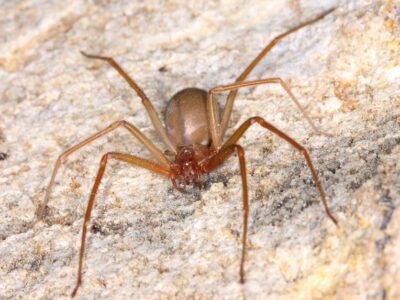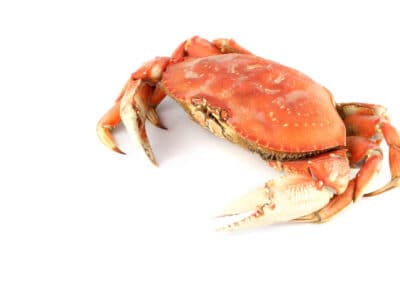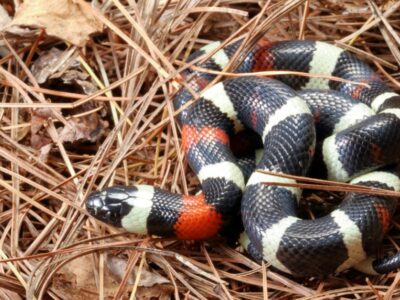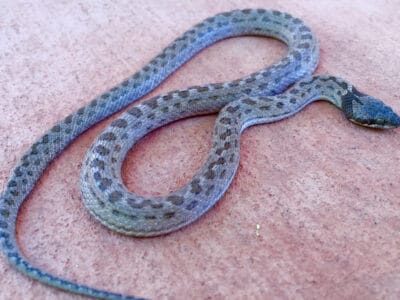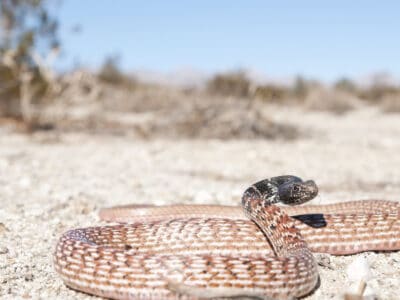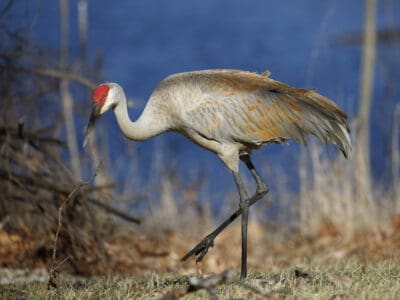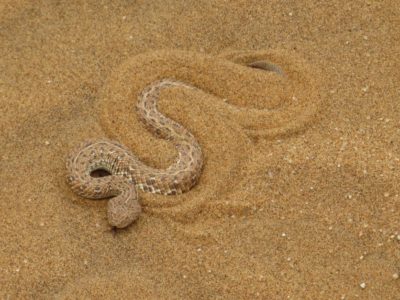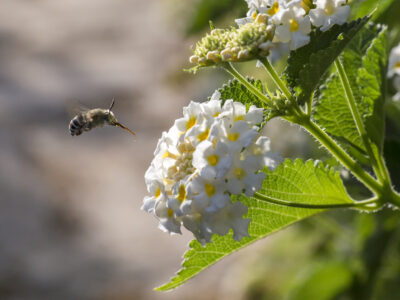California, nicknamed the Golden State, is among the most important places in the union, both in terms of its economy and its amazing biological diversity. With the third-largest landmass in the entire country, it shares a land border with Oregon to the north, Nevada, and Arizona to the east, and Mexico to the south, while the western coast of the state is bounded by the Pacific Ocean. The state of California contains many diverse ecosystems – from massive old-growth forests to near inhospitable deserts. ©iStock.com/TravelShotz
Due to its extreme north-to-south configuration, the state encompasses a huge diversity of different climates and ecosystems. In the center of the state lies the California Central Valley. It is surrounded on all sides by several mountain ranges, including the Sierra Nevada, the Klamath Mountains, the Coast Ranges, and the Transverse Ranges. California contains both the highest point, Mount Whitney, and the lowest point, Death Valley, in the entire continental United States. It harbors everything from massive old-growth forests to nearly inhospitable deserts. It may be said that California is a land of extremes.
The Official Animal of California
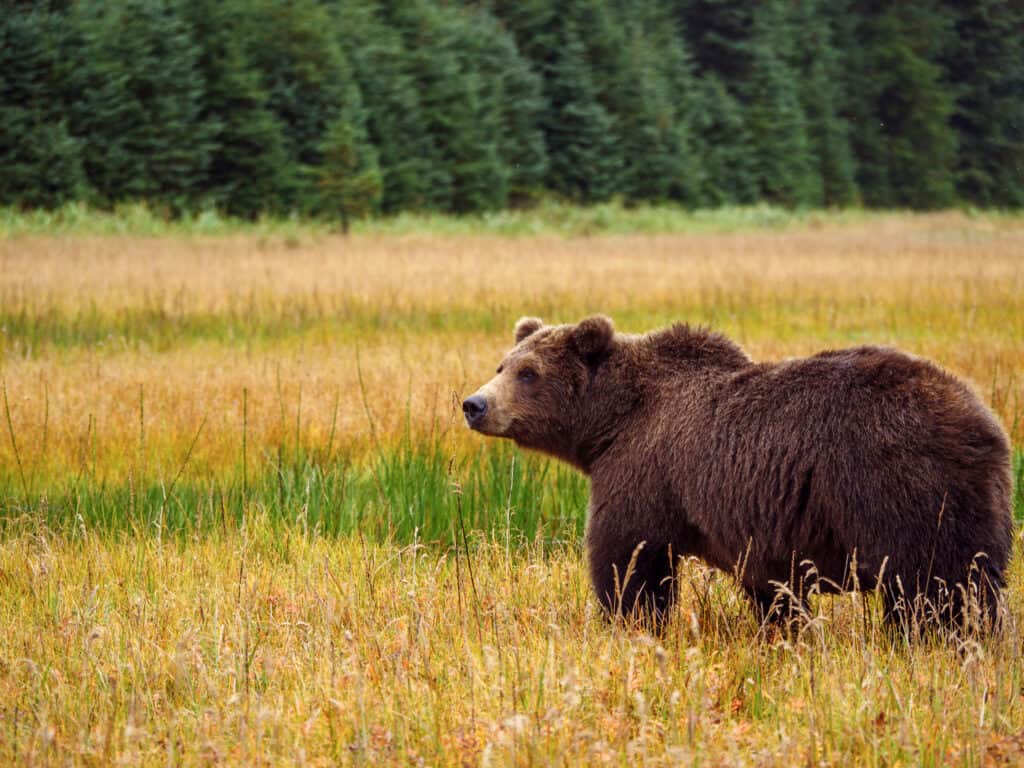
The grizzly bear is the official animal of California and is featured on the state flag.
©Pat de la Harpe/Shutterstock.com
The state of California is represented by several official animals. The official state fish is the golden trout, originally native to Kern River, south of Mount Whitney. The official state amphibian is the California red-legged frog, the largest native frog in the western United States. The official state insect is the California dogface, a butterfly native to the Sierra Nevada foothills and the San Diego area. The official marine fish is the golden orange fish, located right off the southern coast.
The official state reptile is the desert tortoise, located in the southwestern deserts. The official marine reptile is the Pacific leatherback sea turtle, which sometimes comes ashore to lay eggs. The official state bird is the California quail, a popular game bird that sports blue-gray plumage. The official state animal (which also adorns the flag) is the California grizzly bear. While it’s often associated with the state, the grizzly hasn’t actually been present in California since the early 20th century.
Rarest Animal in California
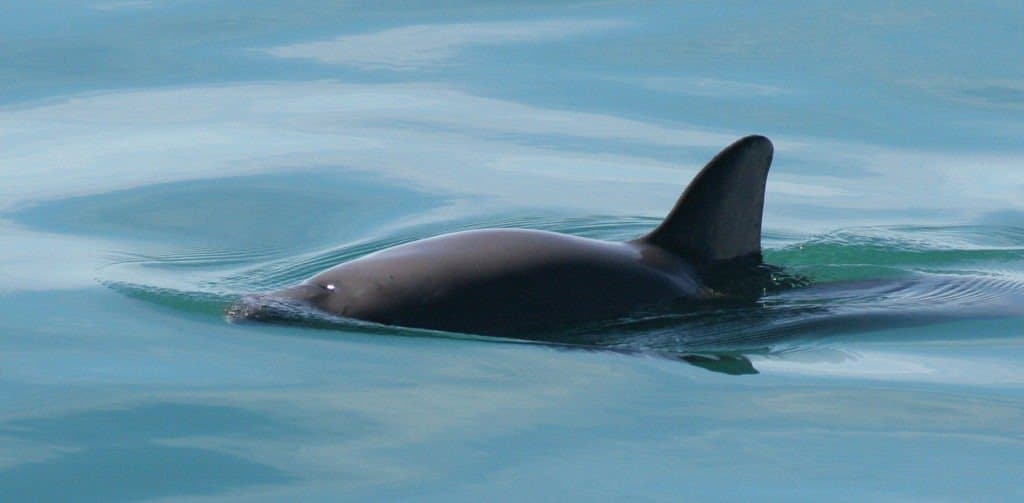
The Vaquita is the rarest marine animal in the world and can only be found in the Gulf of California.
©Paula Olson, NOAA / Public domain, via Wikimedia Commons – Original / License
The vaquita is a little porpoise that can only be found in the Gulf of California, with only 10 individuals remaining. They are often caught and drowned in gillnets used in illegal fishing operations – causing their populations to decline drastically.
Vaquitas are most often found close to shore in the Gulf’s shallow waters. They have large dark rings around their eyes and dark patches on their lips that form a thin line from the mouth to the pectoral fins. This small porpoise is dark gray with a white underside that features long gray markings. Vaquitas grow up to 5 feet long and weigh up to 120 pounds.
Largest Animal in California
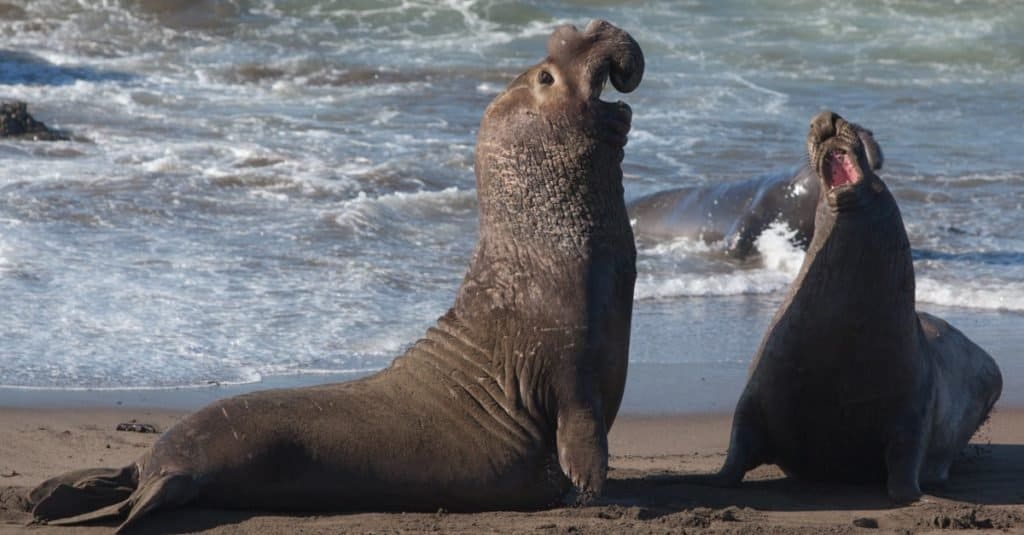
Elephant
seals can weigh up to 8,200 pounds.
©FiledIMAGE/Shutterstock.com
While whales may be the absolute largest animal that can be seen in California, the elephant seal is by far the largest animal that can be seen on land. These massive animals are really heavy – with males weighing up to 8,200 pounds and 16 feet in length. Females grow up to 11.8 feet in length and weigh up to 1,980 pounds.
Elephant seals got their name because of their tremendous size and the long pendulous noses of the males. These giants spend most of their lives at sea but come ashore to molt, give birth, and mate. It is possible to see elephant seals at the Piedras Blancas Rookery throughout the year. These animals are also among the loudest creatures in the state.
Where to Find the Top Wild Animals in California
The state of California is home to some of the most famous parks and wildlife refuges in the United States. It boasts a total of nine national parks and numerous state parks and refuges where visitors can find plenty of wildlife in their natural habitat. The Grizzly Giant is one of the most famous trees in California, along with being the second largest tree in Yosemite National Park.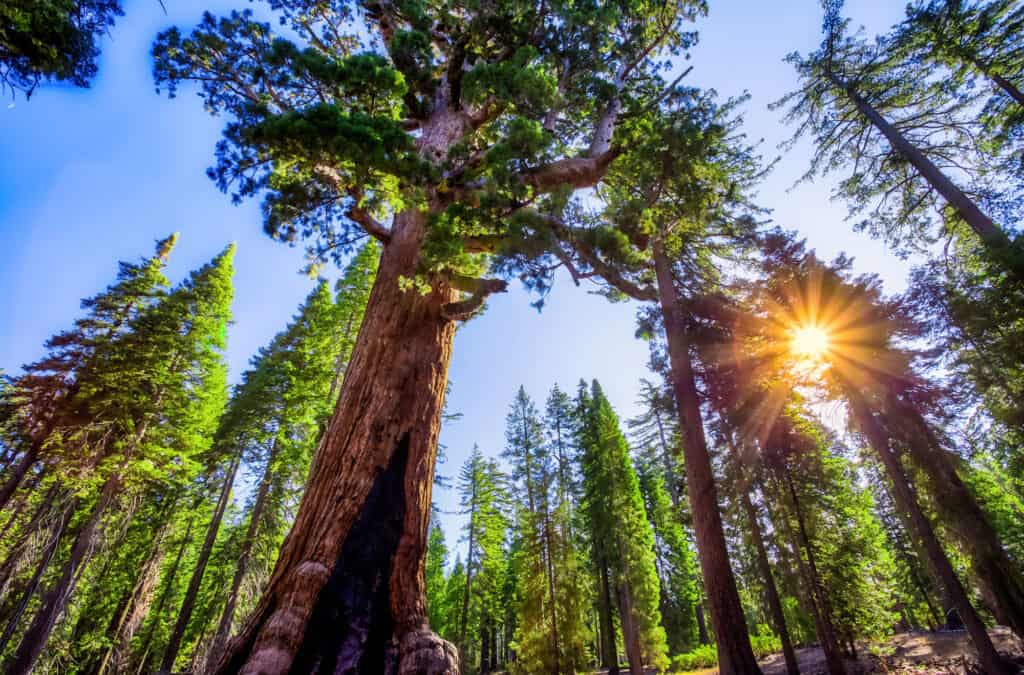
©Stephen Moehle/Shutterstock.com
These Parks are Known for Wildlife Sightings:
- Yosemite National Park, located in the central Sierra Nevada range, right next to the Sierra National Forest and Stanislaus National Forest, is a UNESCO World Heritage Site. It’s one of the best places to camp in California! Dominated by steep cliffs, pine groves, shrublands, and alpine woodlands and meadows, the park harbors plenty of black bears, mule deer, fishers, goshawks, cougars, bobcats, river otters, foxes, and many ferret-like mammals.
- The Redwood National and States parks, located in the far northwest corner of the state, are also UNESCO World Heritage Sites. It encompasses some 100,000 acres of towering redwood forests. Some of the diverse wildlife that one can find here includes mountain lions, black bears, coyotes, bobcats, foxes, beavers, river otters, seals, hawks, ospreys, squirrel-like rodents, and much more.
- The Sequoia National Park and Kings Canyon National Park, located next to each other in the southern part of the Sierra Nevada range, are home to some of the most giant trees on the planet. Visitors can expect to find bighorn sheep, bears, wolverines, cougars, and more.
- Joshua Tree National Park, located near San Bernardino, is named after the craggy trees that thrive in this scenic desert landscape. Roadrunners, tortoises, lizards, coyotes, bobcats, bighorn sheep, jackrabbits, squirrel-like rodents, and kangaroo rats can be found here.
- The Crystal Cove State Park, located near Newport Beach in Orange County, comprises a few acres of coastal cliffs and beachfront coves situated against the Pacific Ocean. It harbors an estimated 180 species of birds, either permanently or seasonally, including the ring bill gull, greater roadrunner, and turkey vulture.
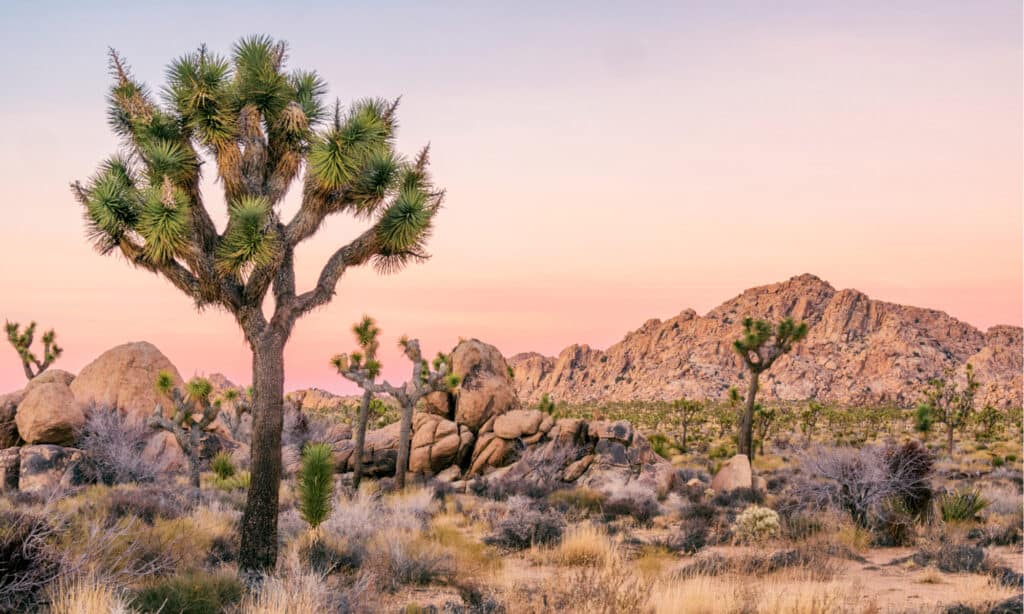
Joshua Tree National Park is home to around 52 species of wildlife
©Dennis Silvas/Shutterstock.com
The Most Dangerous Animals in California Today
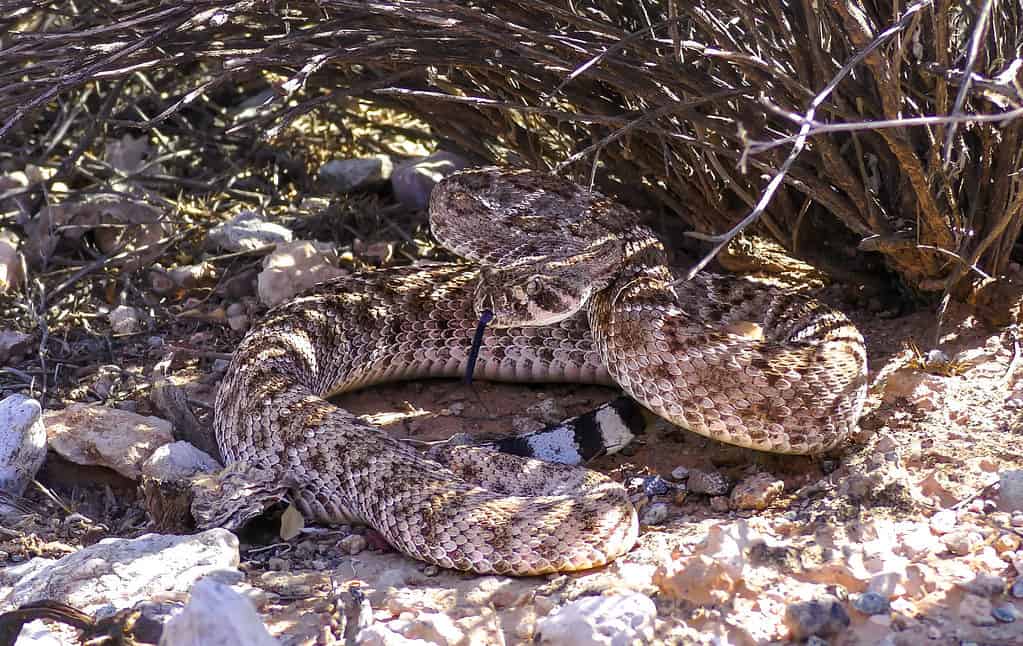
Western diamondback rattlesnakes and other species of rattlesnake bite 800 people a year in California.
©iStock.com/Banu R
California is home to its fair share of dangerous wildlife and predators. It also has a number of invasive species such as ticks. While many of them may look fearsome and scary, most of these species will almost always try to avoid human contact. Attacks usually occur because the animal perceives people as a potential threat (and rarely as a source of food).
- Rattlesnakes: California is home to five rattlesnake species: the western diamondback, the red diamond rattlesnake, the southern Pacific rattlesnake, the great basin rattlesnake, and the Mojave rattlesnake. While they normally give a warning rattle before striking, you would not want to encounter one in the wilderness. Together they account for 800 bites a year and one or two deaths in California. Symptoms of its venom can include pain, swelling, and neurological issues. The prognosis for survival is quite good, but bite victims should always seek medical attention.
- Spiders: California is home to several venomous spiders, including the southern black widow, the western black widow, wolf spiders, the tarantulas, and the recluse spiders. Of all these species, the Chilean recluse spider, an import from Chile, is thought to have particularly potent and potentially lethal venom, but fortunately, it’s quite shy around people.
- Scorpions: The deserts and dry scrub lands of California have several species of scorpions, the most dangerous of which is probably the Arizona bark scorpion. Symptoms of its venom include pain, nausea, numbness, and possibly even convulsions. Healthy adults will almost always recover, but seniors and small children are more at risk of death. Fortunately, they live in the most remote and inhospitable locations of California, where they’re rarely encountered.
- Wasps and Bees: While these insects would normally cause no more than a painful sting, some people may be at risk of having an allergic reaction, which can be fatal in rare circumstances. The so-called “killer bees,” which result from a cross between western and African honey bees, are no more dangerous than other species in terms of their venom, but they do have a tendency to swarm fast and attack in very large numbers.
- Great White Sharks: Their enormous size (up to 21 feet) and several rows of sharp teeth contribute to the fearsome reputation of these predators. But there have only been a handful of recorded deaths from great white attacks in California’s history. Still, they are the most dangerous of all the sharks off the coast of California. It’s thought that most attacks are caused by curiosity, confusion, or fear on the shark’s part. They normally only bite once, but the blood loss alone might be enough to kill.
- Black Bear: While black bears are normally not that aggressive, they have been known to attack people over access to food or to protect their cubs. Fortunately, the vast majority of on-foot encounters rarely end in attacks.
Snakes in California
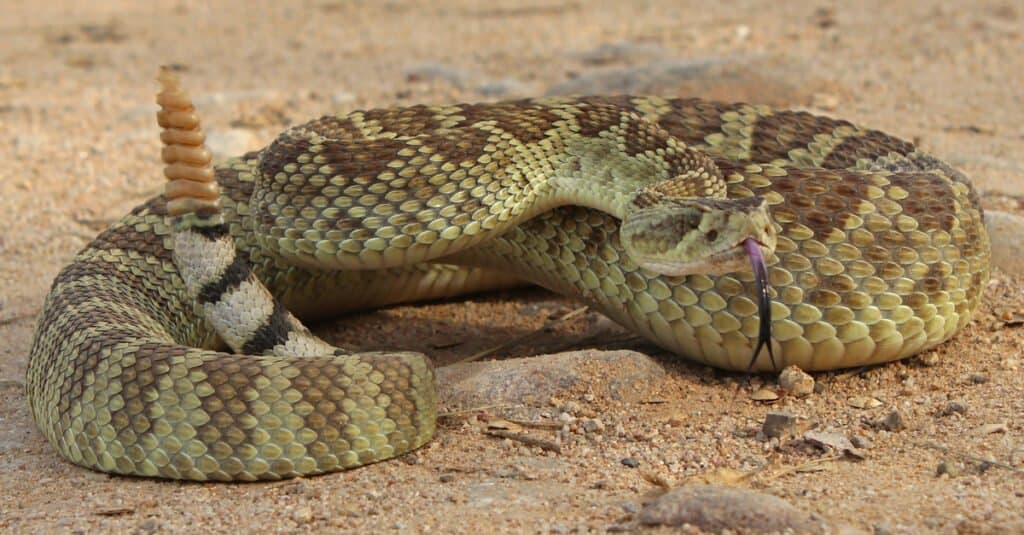
The Mojave rattlesnake is the deadliest snake in California.
©Creeping Things/Shutterstock.com
California is home to 46 types of snakes. Among those, 7 are venomous. Some of the more common snakes in California include gopher snakes, garter snakes, California kingsnakes, and boas (rubber and rosy boas). Venomous snakes in California are all rattlesnakes. The most common is the western rattlesnake, but other venomous snakes include the sidewinder, Mojave rattlesnake, and western diamondback.
The Mojave rattlesnake is the deadliest pit viper and the most venomous snake in California and the world. Their venom is both hemotoxic (destroys blood vessels) and neurotoxic (destroys nerves and nerve tissue). If untreated, the bite from this snake will be fatal.
Endangered Animals in California
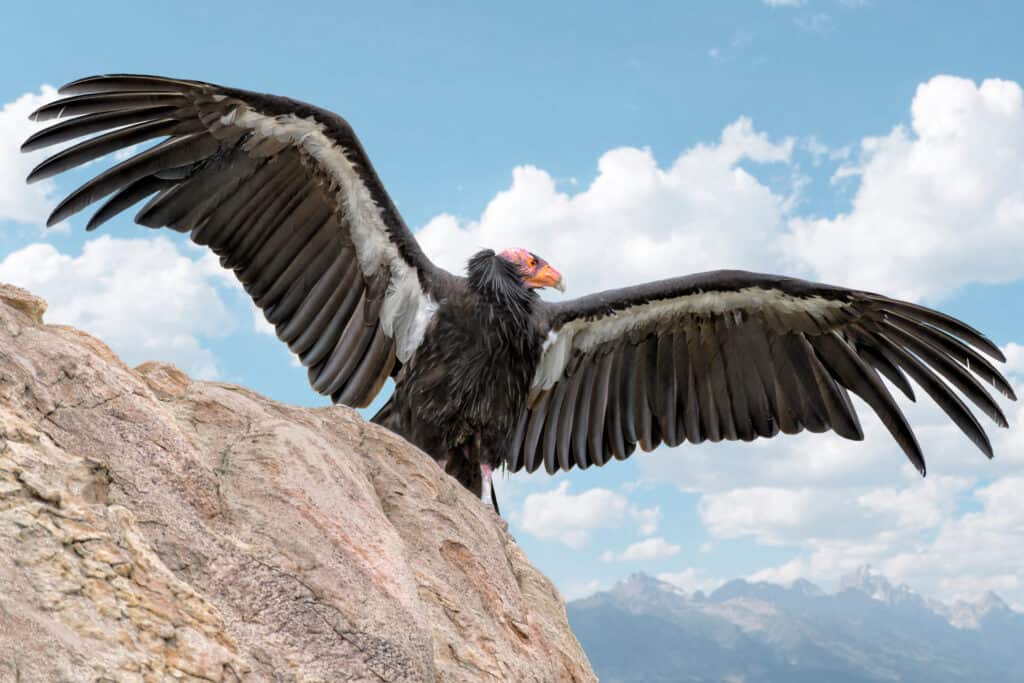
California condors were extinct in 1987 but have been reintroduced and now number a few hundred.
©Barbara Ash/Shutterstock.com
The state of California maintains its own list of threatened animals, independent from the federal government. Normally, at any one time, some 50 species are thought to be in danger of extinction. These include some of the rarest animals in the state.
- Kangaroo Rats: There are actually six species of these small rodents threatened in California: the Morro Bay kangaroo rat, the giant kangaroo rat, the San Bernardino kangaroo rat, the Fresno kangaroo rat, the Tipton kangaroo rat, and Stephens’ kangaroo rat. Despite their small size, these mammals have an amazing ability to leap as high as 9 feet into the air.
- Ground Squirrels: A few squirrel-like species, including the San Joaquin antelope squirrel and Mohave ground squirrel, are currently being threatened by habitat loss. The main reasons for their decline are agriculture and urban development.
- Southern Sea Otter: Up until the early 20th century, the sea otter was hunted almost to extinction for their incredibly thick coat of fur. While numbers have risen again along the Californian coast, it is still considered to be an endangered species.
- Humboldt Marten: This subspecies of the ferret-like Pacific marten is native to old-growth redwood forests throughout the state. It was thought to be completely extinct until being rediscovered in 1996. Commercial trapping and habitat limitations are to blame for the decline of this ferret-like species.
- California Condor: Among the largest birds in the world, this strange bald-headed vulture briefly became extinct in the wild in 1987 due to poaching, poisoning, and habitat destruction (all exacerbated by its slow maturation rate). It was later reintroduced back into the wild thanks to one of the largest conservation efforts ever conceived, but it is still one of the rarest birds in the world with only a few hundred remaining.
- California Brown Pelican: This subspecies of the brown pelican is native to the Californian and Mexican coasts. For a long time, it was threatened by pesticide use, but numbers appear to be recovering again.
- Greater Sandhill Crane: The greater sandhill crane is a subspecies of the large North American wading bird. By 1940, it was estimated that fewer than a thousand birds remained in the wild because of hunting and habitat loss. Populations have since risen to nearly 100,000, but they are still below their peak.
- Sea Turtles: The leatherback and loggerhead sea turtles come ashore in California to lay eggs. They are currently endangered by marine pollution, net entanglements, and the loss of critical nest-laying sites.
- Mountain Yellow-legged Frog: Native to the Sierra Nevada, San Jacinto, and other mountain ranges, this is one of the rarest amphibians in California. It is currently threatened by pesticide use, fungal diseases, and introduced fish species, which feed on the tadpoles. The frog is identified by a strange raspy call, which rises at the end.
- Butterflies: California lists nearly 20 endangered species of butterfly, including the Oregon silverspot butterfly, the lotis blue butterfly, the San Bruno elfin butterfly, and the monarch. Habitat loss is usually the most important reason for their decline.
Check out more endangered animals living in California.
National Parks in California
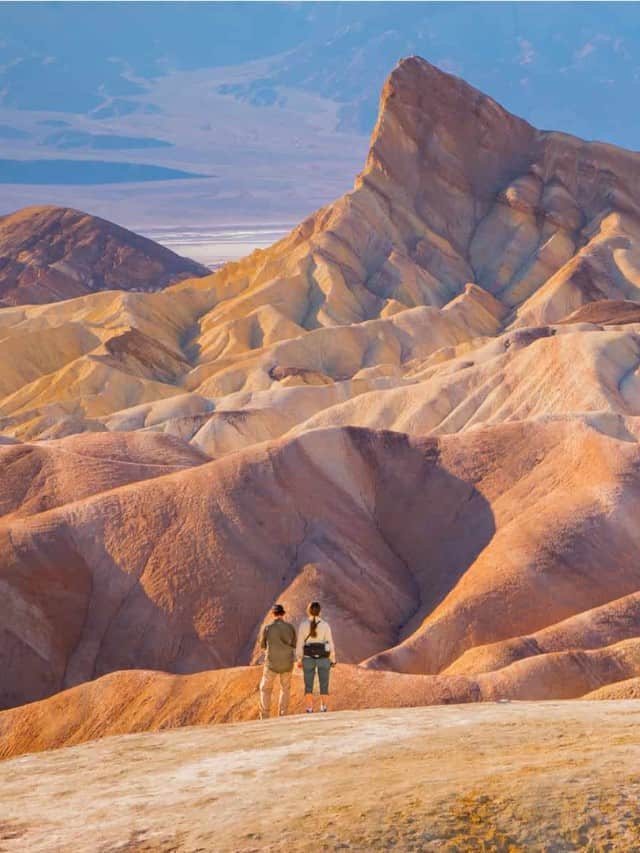
Temperatures in Death Valley National Park can reach 134 degrees Fahrenheit – but the views are worth it!
©Dan Sedran/Shutterstock.com
These Parks are Known for their Natural Beauty:
The largest national park in California is Death Valley, National Park. The area can get quite inhospitable as the highest temperature recorded reached 134 degrees Fahrenheit. California includes such notable national parks as:
- Joshua Tree – A fascinating variety of plants and animals live in a land sculpted by strong winds and occasional heavy rain. A rich cultural history, dark night skies, and geological wonders draw people to this unique wilderness area in southern California.
- Yosemite – Established in 1864, Yosemite is known for its waterfalls, deep valleys, grand meadows, ancient giant sequoias, and herds of bison.
- Sequoia & Kings – This park is where you can see the giant Sequoia, the largest tree on earth. The park also features huge mountains, rugged foothills, deep canyons, and diverse wildlife.
- Redwood – Redwoods are the tallest trees on earth – and Redwood park is the place to see these magnificent giants and much more. Vast prairies, oak woodlands, wild rivers, and 40 miles of rugged coastline are also protected in this stunningly beautiful park.
- Pinnacles – Multiple volcanoes erupted 23 million years ago to create the unique landscape that is now Pinnacles park. Visitors can journey through chaparral, oak woodlands, and canyon bottoms. Rare caves emerge into towering rock spires teeming with life including peregrine falcons, golden eagles, and the rare California condor.
- Lassen Volcanic – This national park is home to steaming fumaroles, wildflower-adorned meadows, clear mountain lakes, and numerous volcanoes.
- Channel Islands – This park spans five islands and their ocean environment which features unique animals, plants, and archeological resources found nowhere else on earth.
In total, there are 28 national parks in California. Channel Island National Park is home to over 100 native species of animals. ©Felix Lipov/Shutterstock.com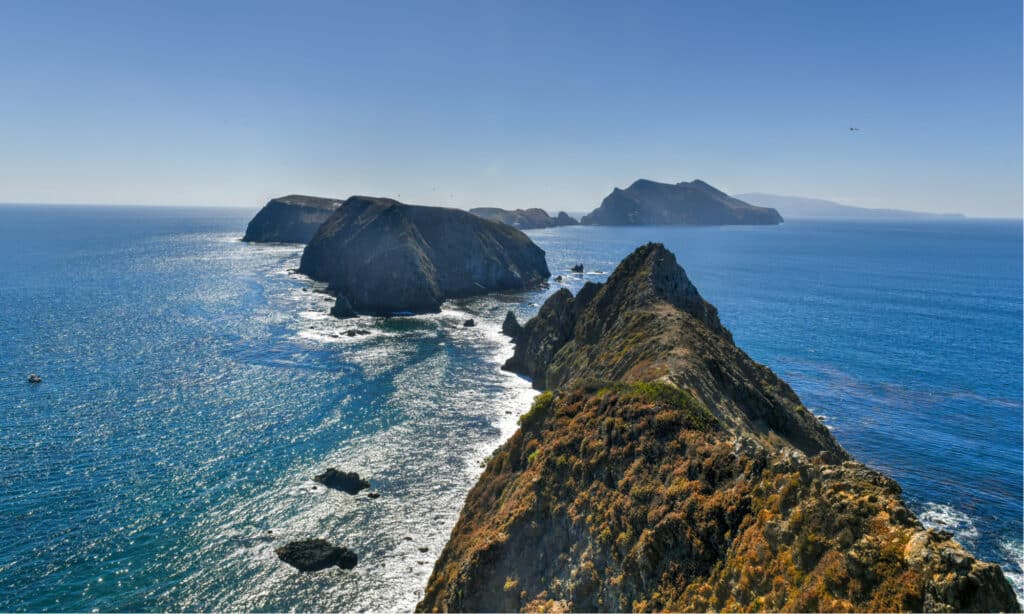
Native Plants in California
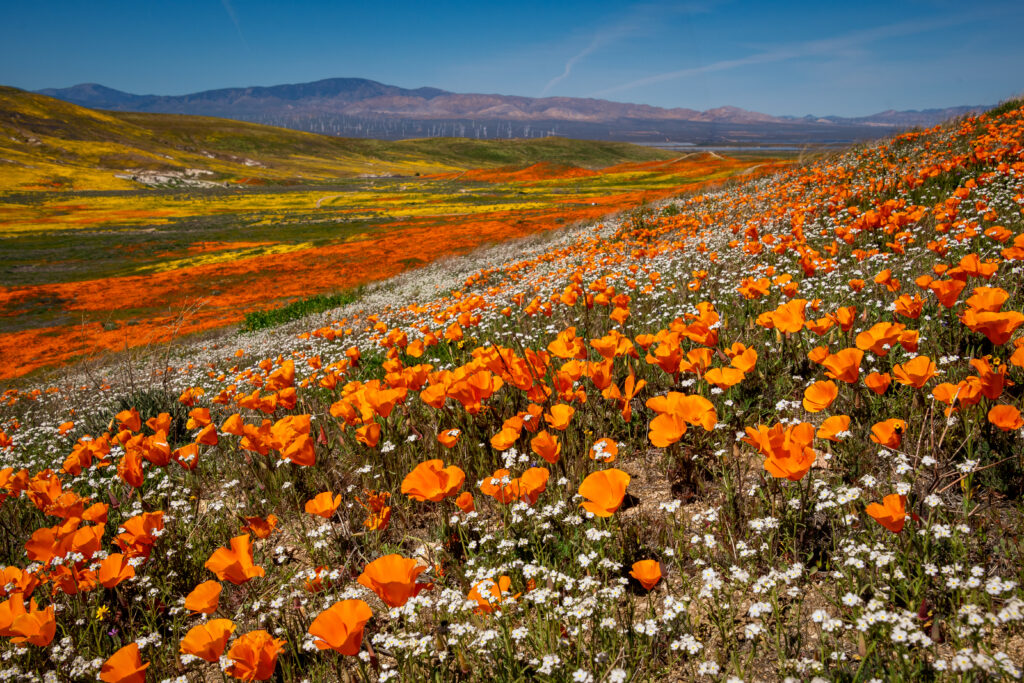
The California poppy is the official state flower.
©MierCat Photography/Shutterstock.com
With more than 6,000 native plants in California, it’s easy to see why green thumbs could spend a lifetime exploring each and every one. With the varying climate that changes the further north or south, you go, it’s easy to see how so many different types of plants, flowers, and trees could survive. Some plants native to California include the California poppy, manzanita, coffeeberry, and mountain violet.
The state’s official flower, the California poppy, is a lovely floral symbol of the fields of gold sought during the California gold rush. The flowers are commonly seen along the scenic highways and country roads of the state, making this plant a highly recognizable symbol of California.
The Flag of California

Flag of California waving in the wind.
©iStock.com/Matthew Starling
The flag of California has a white background symbolizing purity, with a red stripe along the bottom for courage. There is a red star known as the lone star in the upper left quadrant of the flag recognizing the fact that California became a state without ever becoming a territory first. At the center of the flag stands the California grizzly, a now-extinct sub-species of the brown bear and a symbol of the state’s strength and independence.
The bear on the flag was modeled after the last remaining California grizzly, a bear named Monarch. The bear was captured at the behest of newspaper mogul William Randolf Hearst in 1889. The bear lived in captivity, first in Woodwards Gardens in San Francisco, then at the zoo at Golden Gate Park. After the bear’s death in 1911, it was mounted and preserved at the Academy of Sciences at Golden Gate Park.
More Articles Related to California
Read about:
- extinct animals that lived in California.
- plants invading California.
- the largest black bear ever caught in California.
- why venomous sea snakes are suddenly invading California.
- the beaches near Los Angeles with the most shark attacks.
- the best national parks in California.
- the coldest place in California.
- the prettiest state parks in California.
- the best national parks in Northern California.
- gorgeous waterfalls in Southern California and Northern California.
- the absolute best camping near San Francisco, California.
- the absolute best camping near Los Angeles, California.
- the best lakes for swimming in California.
- the longest hiking trail in California.
- the longest biking trail in California.
- the best camping sites near San Diego, California.
- the best dog parks in Los Angeles, San Diego, Oakland, Santa Ana, Bakersfield, San Jose, Anaheim, Fresno, Sacramento, Long Beach, Irvine, Stockton, Riverside, Lincoln, Chula Vista, and Fremont, California.
- the dog parks and recreational areas in Paradise, California.
- the best aquariums in and near Los Angeles, California.
- the best aquariums in California.
- California’s best bird-watching spots.
- the best fishing spots in California in the summer.
- the largest forest in California.
- the largest desert sheep ever caught in California.
- The largest bluefin tuna ever caught in California
- The largest cougar ever caught in California
- Discover The Largest Blacktail Deer Ever Caught in California
- Discover 24 Invasive Plants in California
Californian Animals
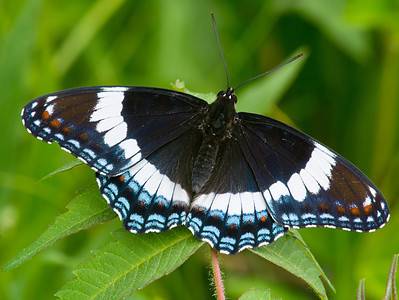
Admiral Butterfly
Stunningly beautiful wings
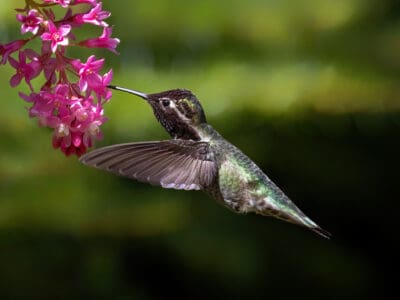
Anna’s Hummingbird
Anna's Hummingbird wings beat 40-50 times per second during normal flight
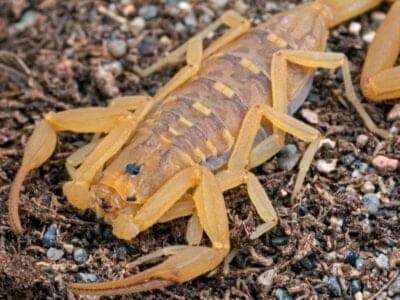
Arizona Bark Scorpion
Under UV light they glow a bright blue or green, making them easy to spot.
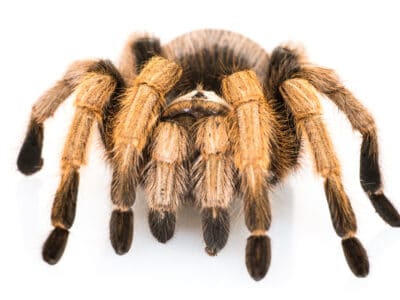
Arizona Blonde Tarantula
They are covered in thousands of fuzzy blonde hairs.

Beewolf wasp
They hunt bees
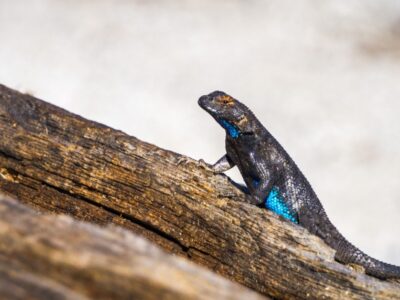
Blue Belly Lizard
This species can detach its tail to escape from predators
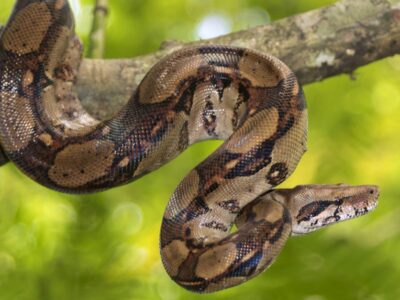
Boas
Boas are considered primitive snakes and still have vestigial legs, called spurs.

Burrowing Owl
The burrowing owl lives in underground burrows

Cactus Mouse
In hot temperatures, they lower their metabolism and become inactive to reduce the amount of water they need to survive

Cactus Wren
It is the largest wren in the United States
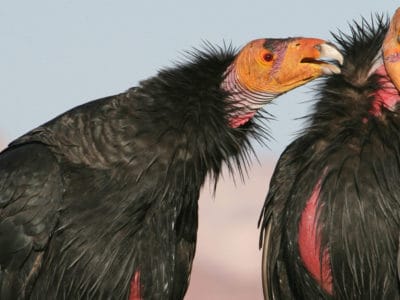
California Condor
They are the largest bird in North America
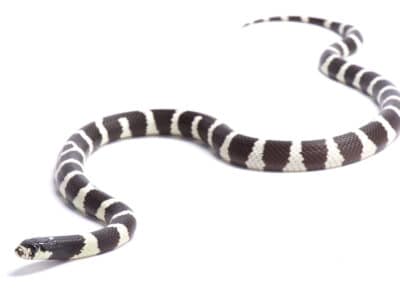
California Kingsnake
A full-grown California kingsnake can be about 3.5 feet long, though there are some cases in Mexico of the snake being almost twice this size.

California Tarantula
They can go for months without eating!
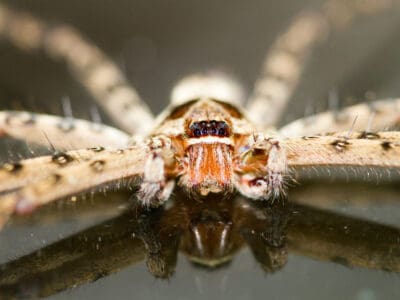
Cane Spider
Cane spiders don't spin webs to catch prey
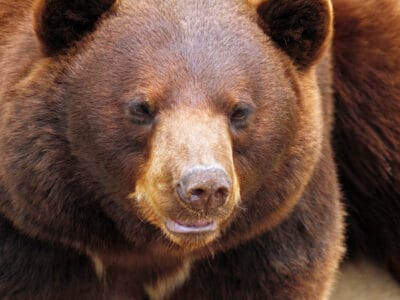
Cinnamon Bear
A newborn cinnamon bear weighs 1/2 pound -- about the same as a large apple.
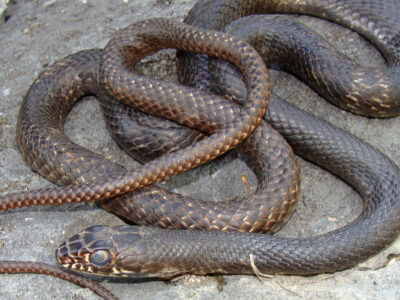
Coachwhip Snake
Coachwhip snakes pose little danger to people
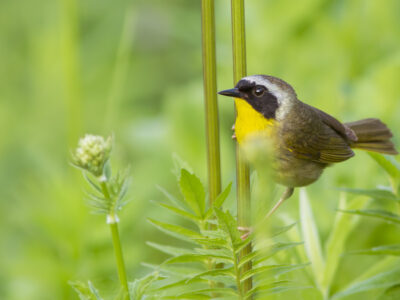
Common Yellowthroat
The Common Yellowthroat stays close to the ground and uses stealth to survive!
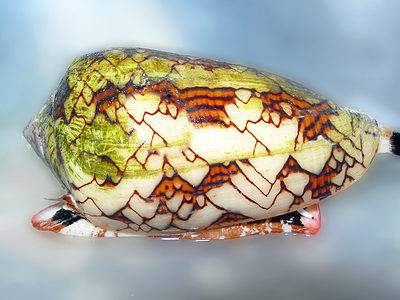
Cone Snail
Beautiful, but deadly!
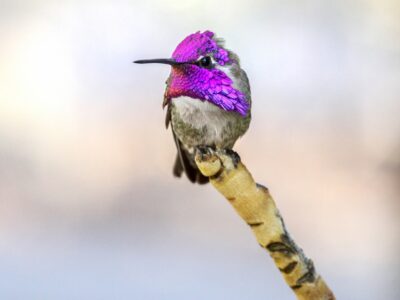
Costa’s Hummingbird
Costa's Hummingbird males have iridescent purple feathers on their heads and necks.
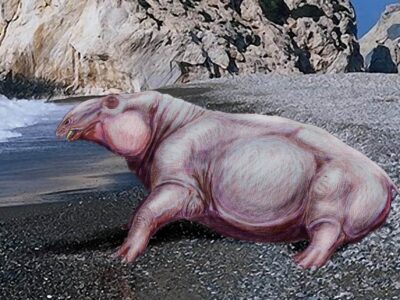
Desmostylus
Desmostylus has no living descendant.

Flea
Adult fleas can jump up to 7 inches in the air
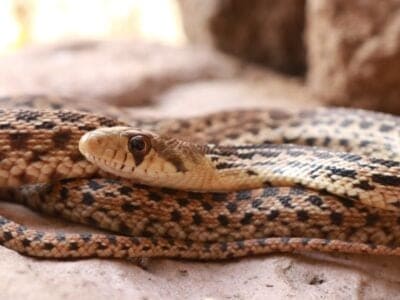
Gopher Snake
Gopher snakes can reach up to 9 feet long.
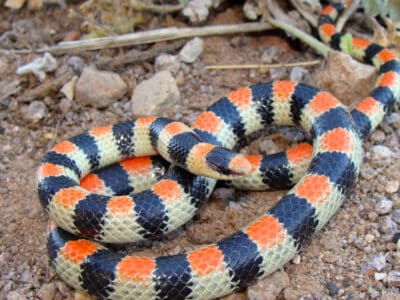
Ground Snake
It’s sometimes called a miter snake due to the marking on its head that looks like a bishop’s miter
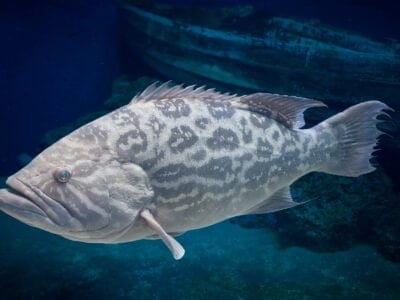
Grouper
Many grouper can change their sex, and it is always from female to male.
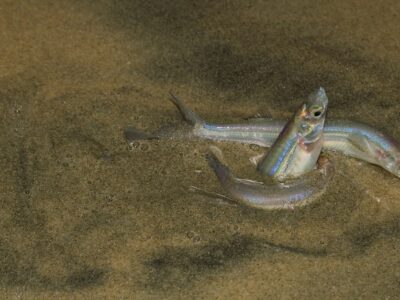
Grunion
Their whole bodies are edible
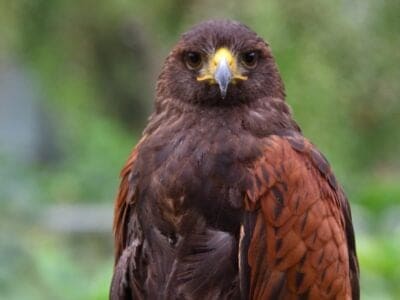
Harris’s Hawk
Their vision is eight times better than a human's
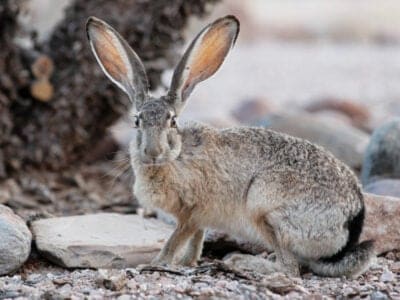
Jackrabbit
They can run as fast as 45 mph.
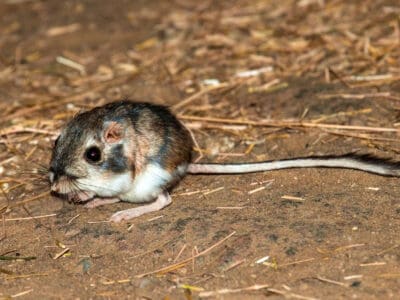
Kangaroo Mouse
The Kangaroo Mouse is a tiny mouse that stands and hops around on its hind legs, much like a kangaroo.
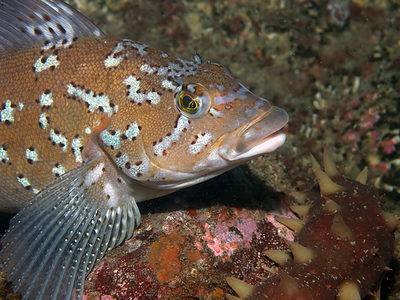
Kelp Greenling
Male Kelp Greenlings participate in an unusual mating ritual by fertilizing eggs in the nests of other males.

King Snake
King Snakes eat other types of snakes.
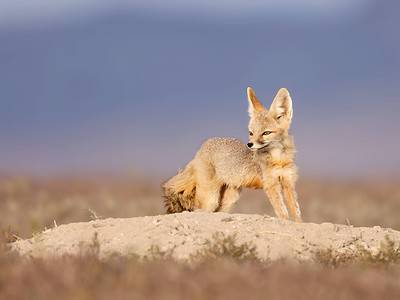
Kit Fox
The kit fox is the smallest canid in North America.

Kokanee Salmon
A non-anadromous type of sockeye salmon
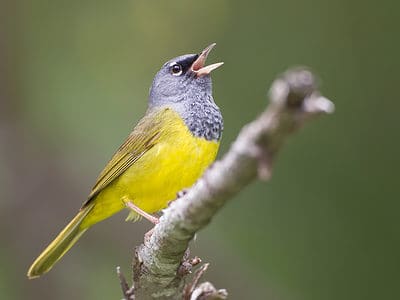
MacGillivray’s Warbler
The complicated story of how MacGillivray’s Warblers got their name involves three ornithologists, a physician and a compromise.

Mealybug
They have a symbiotic relationship with ants.

Mexican Mole Lizard
They can break off part of their tail, but it will not grow back.

Mockingbird
Mockingbirds are incredible mimics that can learn hundreds of songs!
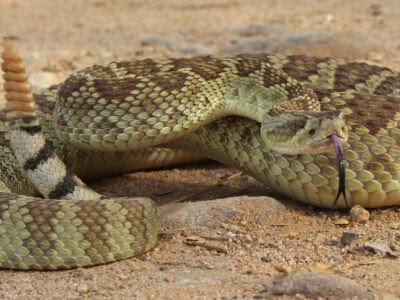
Mojave Rattlesnake
"The Mojave rattlesnake is the most venomous rattlesnake in the world."
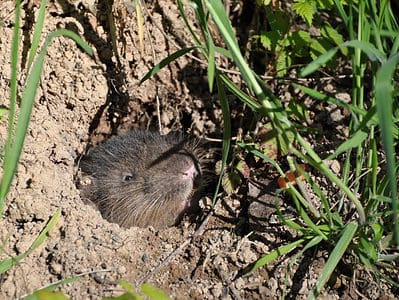
Mountain Beaver
The beaver that is not a beaver

Nematode
Nematodes range in size from 1/10 of an inch to 28 feet long
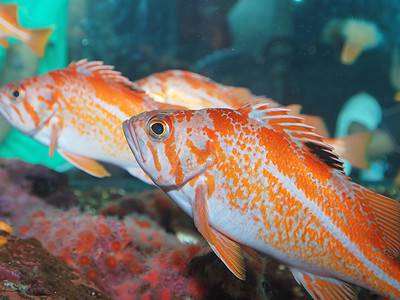
Ocean Perch
As a scorpionfish, the ocean perch has spines along its back!
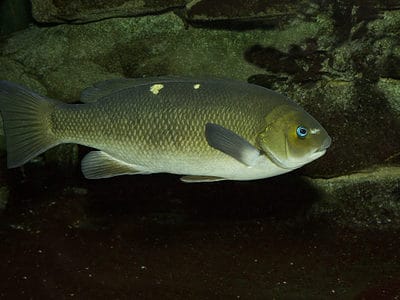
Opaleye (Rudderfish)
Some indigenous people of the Pacific coast of North America consider opaleye fish sacred food and use it in traditional ceremonies.

Orb Weaver
Females are about four times the size of males

Owl
The owl can rotate its head some 270 degrees
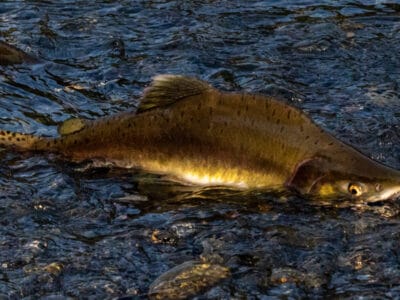
Pink Salmon
The smallest of the North American salmon
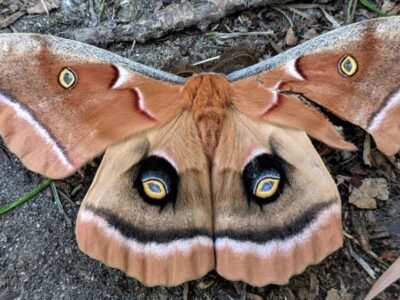
Polyphemus Moth
The Polyphemus moth doesn’t and can't eat, except when it's a caterpillar!
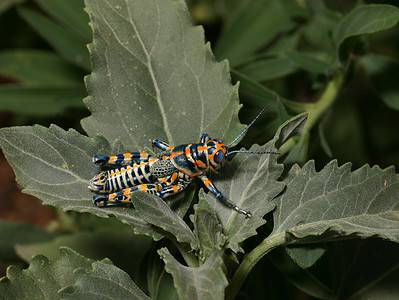
Rainbow Grasshopper (Dactylotum bicolor)
They have strikingly bright colors
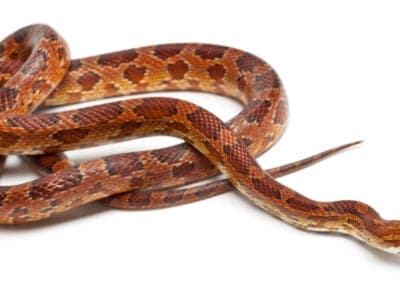
Rat Snakes
Rat snakes are constrictors from the Colubridae family of snakes.

Red Diamondback Rattlesnake
A rattlesnake can shake its rattle back and forth 20-100 times per second.
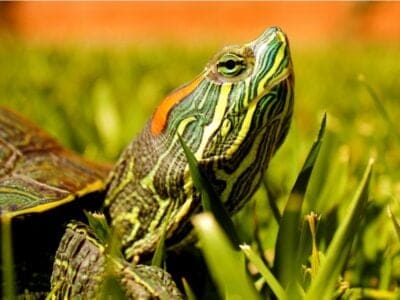
Red-Eared Slider
Sliders spend lots of time basking in the sun. As cold-blooded animals, they need the sun to heat up.

Rooster
Will mate with the entire flock!
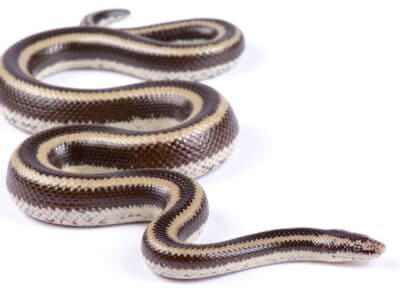
Rosy Boa
One of the few snakes that naturally comes in a rainbow of colors!

Seagull
Some gulls are capable of using tools
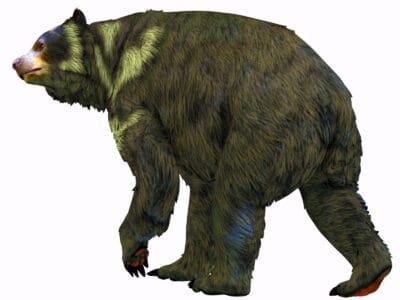
Short-Faced Bear
The modern Spectacled Bear, which lives in South America, is related to the Short-Faced Bear!
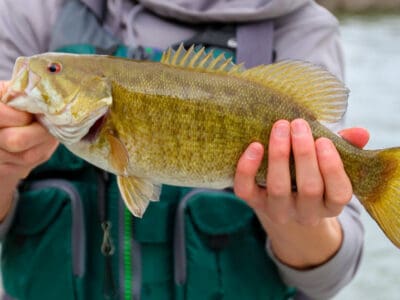
Smallmouth Bass
A fierce fighter!

Smokybrown Cockroach
Has up to 45 eggs per egg case
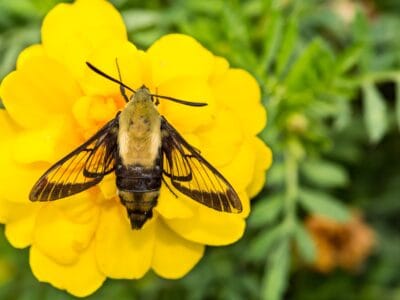
Snowberry Clearwing Moth
They are pollinators, just like bees.
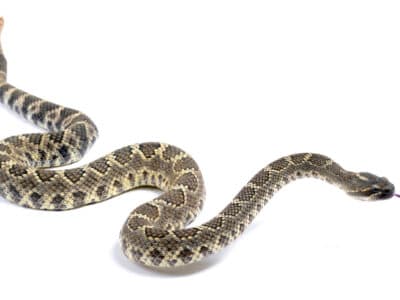
Southern Pacific Rattlesnake
Southern Pacific rattlesnakes hibernate in dens that hold hundreds of snakes.
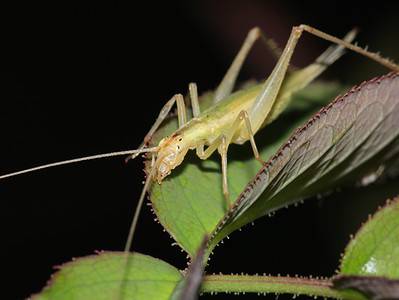
Tree Cricket
They make music with their wings

Western Blacklegged Tick
Western blacklegged ticks are only found in the west coast of the United States
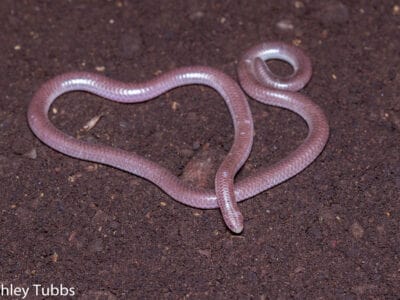
Western Blind Snake
Western blind snakes are flourescent in black light!
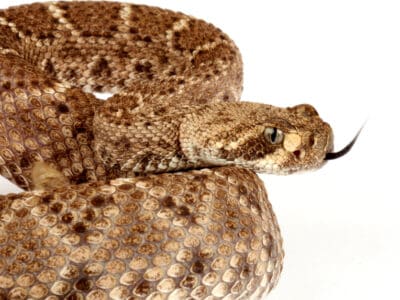
Western Diamondback Rattlesnake
They replace their fangs 2-4 times per year!
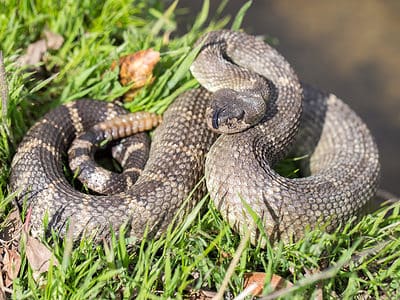
Western Rattlesnake (Northern Pacific Rattlesnake)
Western rattlesnakes are shy and try to avoid people whenever possible.
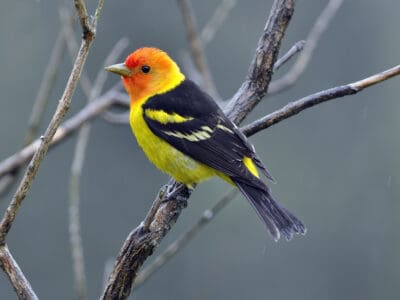
Western Tanager
They migrate farther north than any other tanager.
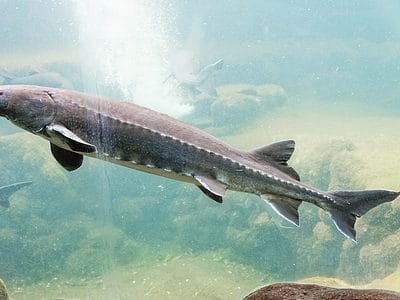
White Sturgeon
They don't have any teeth!
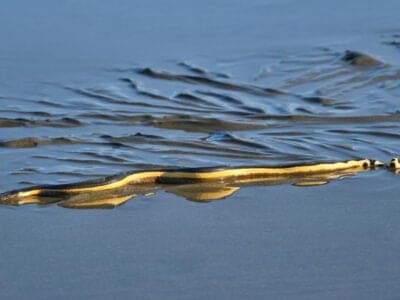
Yellow-Bellied Sea Snake
Sea snakes spend approximately 90% of their lives under water.
Californian Animals List
- Admiral Butterfly
- Anna’s Hummingbird
- Arizona Bark Scorpion
- Arizona Blonde Tarantula
- Beewolf wasp
- Blue Belly Lizard
- Boas
- Burrowing Owl
- Cactus Mouse
- Cactus Wren
- California Condor
- California Kingsnake
- California Tarantula
- Cane Spider
- Chilean Recluse Spider
- Cinnamon Bear
- Coachwhip Snake
- Common Yellowthroat
- Cone Snail
- Costa’s Hummingbird
- Desmostylus
- Dire Wolf
- Dungeness Crab
- Flea
- Gopher Snake
- Ground Snake
- Grouper
- Grunion
- Harris’s Hawk
- Jackrabbit
- Kangaroo Mouse
- Kelp Greenling
- King Snake
- Kit Fox
- Kokanee Salmon
- MacGillivray’s Warbler
- Mealybug
- Mexican Mole Lizard
- Milk Snake
- Mockingbird
- Mojave Rattlesnake
- Mountain Beaver
- Nematode
- Night Snake
- Ocean Perch
- Opaleye (Rudderfish)
- Orb Weaver
- Owl
- Pink Salmon
- Polyphemus Moth
- Rainbow Grasshopper (Dactylotum bicolor)
- Rat Snakes
- Red Diamondback Rattlesnake
- Red-Eared Slider
- Red Racer Snake
- Rooster
- Rosy Boa
- Sandhill Crane
- Seagull
- Short-Faced Bear
- Sidewinder
- Smallmouth Bass
- Smokybrown Cockroach
- Snowberry Clearwing Moth
- Southeastern Blueberry Bee
- Southern Pacific Rattlesnake
- Swallowtail Butterfly
- Tree Cricket
- Western Blacklegged Tick
- Western Blind Snake
- Western Diamondback Rattlesnake
- Western Rattlesnake (Northern Pacific Rattlesnake)
- Western Tanager
- White Sturgeon
- Yellow-Bellied Sea Snake
- Yellowish Cuckoo Bumblebee (formerly Fernald’s Cuckoo Bumblebee)
Animals in California FAQs (Frequently Asked Questions)
What animals are only found in California?
Several species of wild animals are common to California but found nowhere else. The Tule elk, which almost became extinct in the 19th century, is the smallest subspecies of elk in North America, growing no larger than 400 to 500 pounds. The California clapper rail, an endangered subspecies of the clapper rail, is native to Morro Bay and San Francisco Bay. The San Francisco garter snake, which sports a sleek red and blue strike running down the length of its body, is a subspecies of the common garter snake. The California newt, which sports a strange orange and brown body, is found throughout the state; it secretes a potentially dangerous toxin that can harm people. The golden trout, the state fish, was originally native to the Kern River, but it’s been introduced elsewhere.
What big animals live in California?
The state of California is home to black bears, wolves, mountain lions, bobcats, coyotes, and elk. Grizzly bears were once quite common in the state, but because they often attacked livestock, people had hunted all of them to death by the early 20th century.
Does California have deadly animals?
California is home to many species of venomous and stinging animals, including rattlesnakes, wasps, bees, spiders, and scorpions. While collectively they are responsible for causing a few deaths per year, most people will easily survive a dangerous encounter as long as they receive proper medical treatment. Larger predators such as black bears and mountain lions are responsible for a few attacks every year as well, but they will almost always ignore humans unless directly threatened.
Does California have a lot of wildlife?
Yes, the state of California has some of the most diverse wildlife in the entire country. Its large geographical size, diverse ecosystems, and large expanses of pristine land all combine to make it suitable for all kinds of wildlife. It’s estimated to have nearly 300 species of mammals, more than 600 birds, and more than 100 species of reptiles.




